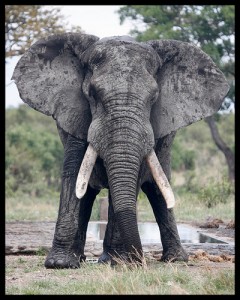Fighting Poachers From the Lab
Wildlife activists have a new method for fighting Africa’s increasingly bold elephant poachers. Historically, scientists and governments have struggled to determine whether a piece of ivory was poached illegally or was obtained before the 1989 international ban on ivory trading, which has left some African governments with enormous stockpiles of ivory to manage and protect. But a team of scientists recently determined that it’s possible to use the amount of radiocarbon in an ivory tusk to determine what year the animal died — and, by extension, whether the ivory was illegally poached.
“The amount of radiocarbon in the atmosphere nearly doubled during nuclear weapons tests from 1952 to 1962, which steadily dropped after tests were restricted to underground. This has been dubbed ‘the bomb-curve,'” explains a BBC article on the study. The resulting significant variations in atmospheric radiocarbon allow for highly accurate dating. Scientists also hope that the technique will help shed light on poaching hotspots. Kevin Uno, the study’s lead author, told the BBC that the technique “would dovetail very nicely with DNA testing which tells you the region of origin, but not the date.”


Comments